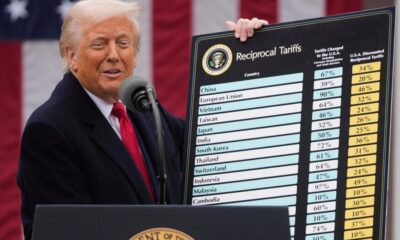Business
Canadian Government Faces Pressure to Regulate Stablecoins

In anticipation of the upcoming federal budget announcement on November 4, 2025, the Canadian government is facing mounting pressure to establish regulations for stablecoins. These digital assets, designed to mirror the value of traditional currencies, have experienced rapid growth, prompting concerns about their potential impact on the nation’s financial stability.
Calls for regulatory clarity have intensified as industry leaders express the need for a Canadian-dollar linked stablecoin. Didier Lavallee, chief executive of Tetra Digital Group, emphasized that Canadians should prioritize a stablecoin pegged to their currency to maintain financial sovereignty. The concern arises particularly in light of recent U.S. legislation that has set clear guidelines for stablecoins, further entrenching the dominance of the U.S. dollar in the crypto market.
According to Ron Morrow, executive director of payments at the Bank of Canada, the country must evaluate the merits of federal stablecoin regulation. Former deputy governor Timothy Lane has voiced similar concerns, stating that stablecoins have grown too important to be overlooked. In a report for the Global Risk Institute, Lane noted an increasing urgency for a coherent regulatory framework.
The head of Canada’s banking regulator, Peter Routledge, has also expressed apprehension regarding the rapid developments in the stablecoin sector. John Ruffolo, managing partner at Maverix Private Equity, highlighted the risk of capital flight, warning that if even 5% of Canadian bank deposits—approximately $135 billion—migrated to U.S. stablecoins, it could severely impact domestic lending capacity, potentially erasing up to $675 billion in lending.
Despite growing calls for action, some companies are choosing to move forward independently. Tetra Digital Group, for instance, has secured $10 million in funding from major backers, including Wealthsimple, National Bank, and Shopify, to prepare for the launch of their own stablecoin aimed for release in early 2026. Other companies, such as Transactix Financial Inc. and Loon Technology Inc., are also developing their own tokens, indicating a proactive stance amidst regulatory uncertainty.
While the Ontario Securities Commission has taken an active role in overseeing stablecoin operations, Grant Vingoe, the commission’s head, has suggested that Canada’s adaptable regulatory approach may serve the industry better than a rigid legislative framework. Currently, only one issuer, Circle, has received regulatory approval for its U.S. dollar-pegged stablecoin.
The global market for stablecoins is projected to grow significantly. A report by Citigroup estimates that the total pool of stablecoins could expand from approximately US$200 billion at the beginning of 2025 to as much as US$1.9 trillion by 2030, with a bullish scenario possibly reaching US$4 trillion.
As discussions continue, the Finance Department’s spokesman, Benoit Sabourin, affirmed that the government is actively collaborating with federal and provincial regulators to assess risks and explore measures to mitigate potential issues while also seizing opportunities.
The interplay of innovation, regulation, and market dynamics will play a crucial role in shaping the future of stablecoins in Canada. With the federal budget announcement approaching, stakeholders await clarity on the government’s plans to address this rapidly evolving sector.
-

 World4 months ago
World4 months agoScientists Unearth Ancient Antarctic Ice to Unlock Climate Secrets
-

 Entertainment4 months ago
Entertainment4 months agoTrump and McCormick to Announce $70 Billion Energy Investments
-

 Lifestyle4 months ago
Lifestyle4 months agoTransLink Launches Food Truck Program to Boost Revenue in Vancouver
-

 Science4 months ago
Science4 months agoFour Astronauts Return to Earth After International Space Station Mission
-

 Technology2 months ago
Technology2 months agoApple Notes Enhances Functionality with Markdown Support in macOS 26
-

 Top Stories3 weeks ago
Top Stories3 weeks agoUrgent Update: Fatal Crash on Highway 99 Claims Life of Pitt Meadows Man
-

 Sports4 months ago
Sports4 months agoSearch Underway for Missing Hunter Amid Hokkaido Bear Emergency
-

 Politics3 months ago
Politics3 months agoUkrainian Tennis Star Elina Svitolina Faces Death Threats Online
-

 Politics4 months ago
Politics4 months agoCarney Engages First Nations Leaders at Development Law Summit
-

 Technology4 months ago
Technology4 months agoFrosthaven Launches Early Access on July 31, 2025
-

 Top Stories1 week ago
Top Stories1 week agoFamily Remembers Beverley Rowbotham 25 Years After Murder
-

 Entertainment4 months ago
Entertainment4 months agoCalgary Theatre Troupe Revives Magic at Winnipeg Fringe Festival





















